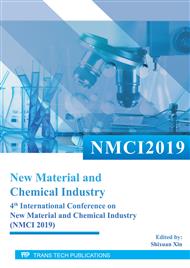p.153
p.160
p.168
p.174
p.182
p.186
p.193
p.199
p.205
The Effect of Carbonization Temperature on Carbon Aerogels Structure
Abstract:
Phloroglucinol–resorcinol–formaldehyde (PRF) carbon aerogels were synthesized by sol–gel reaction. The results of condition of shrinkage showed a degree of crosslinking more obvious with the increasing of the carbonization temperature. CA900 displays the highest adsorption amount and the biggest loops, as well as an increase in pore size and volume in comparison to the others samples. The SEM images of carbon aerogels under different carbonization temperature possess closer network structure and excellent connectivity, the holes between the network are abundant. The XRD patterns show that the high carbonization temperature can enhance the graphitization degree of carbon aerogels.
Info:
Periodical:
Pages:
182-185
Citation:
Online since:
May 2020
Authors:
Keywords:
Price:
Сopyright:
© 2020 Trans Tech Publications Ltd. All Rights Reserved
Share:
Citation:


